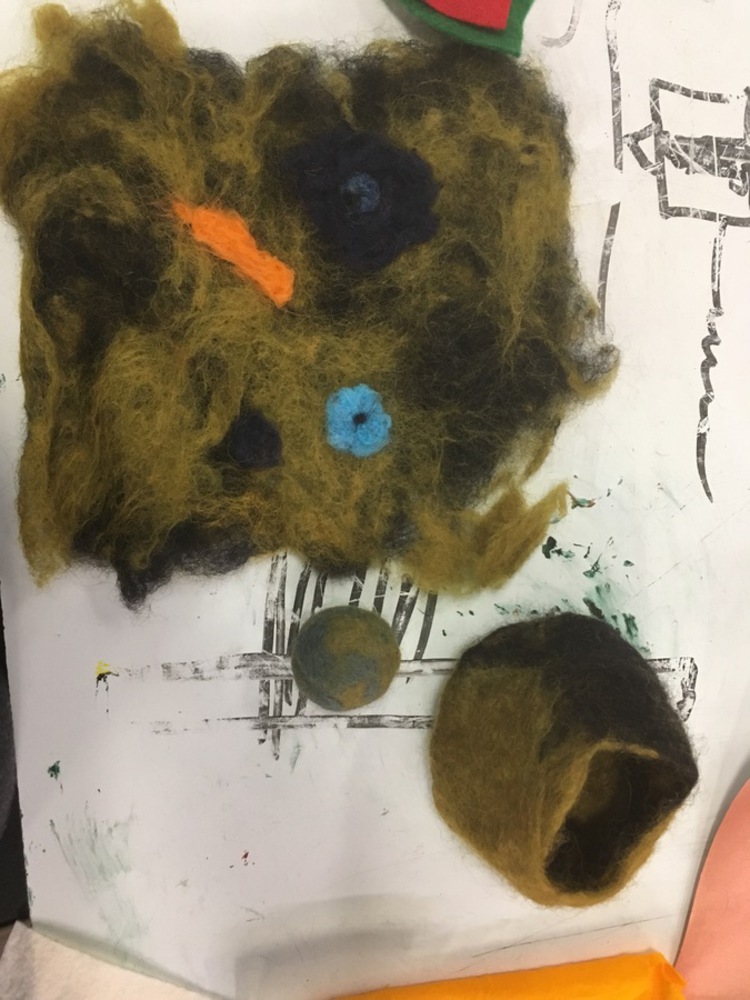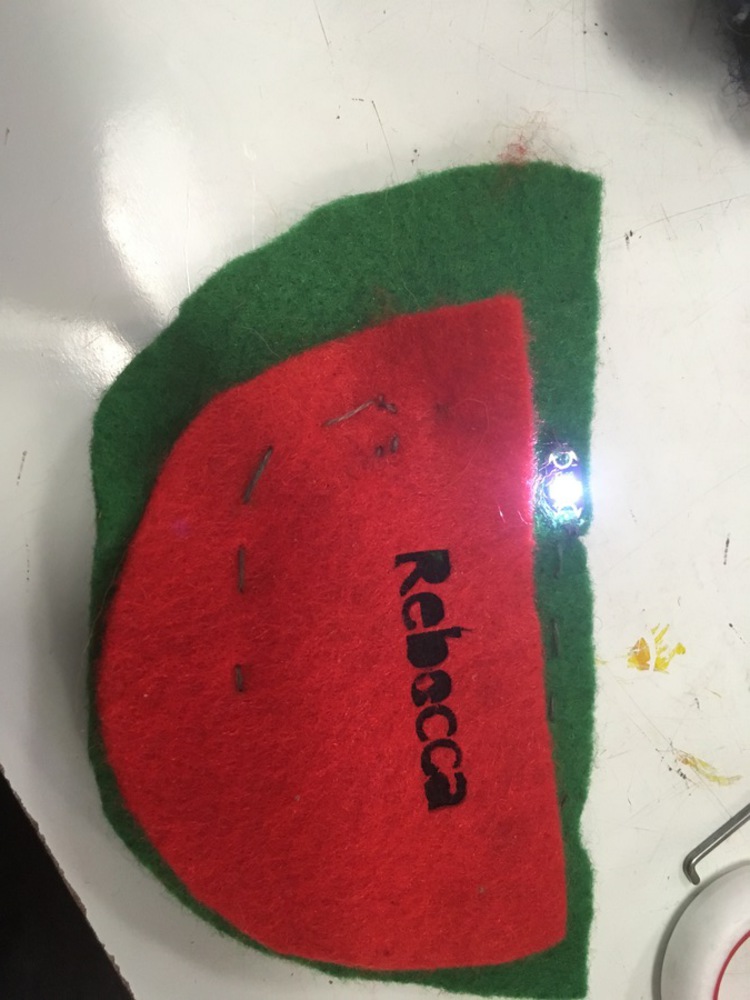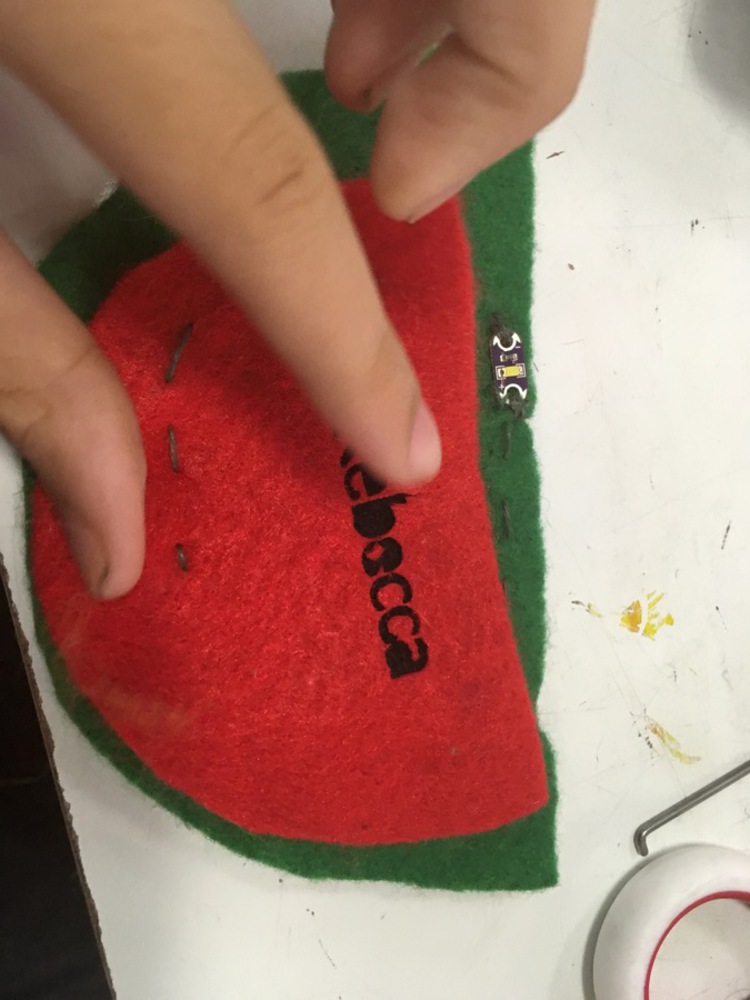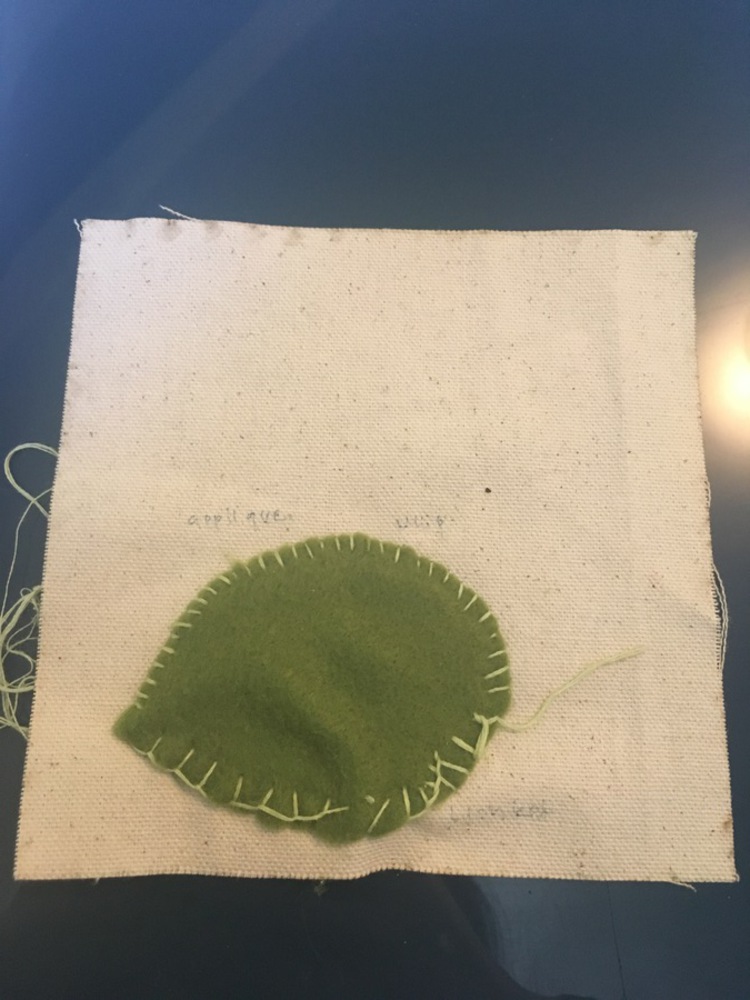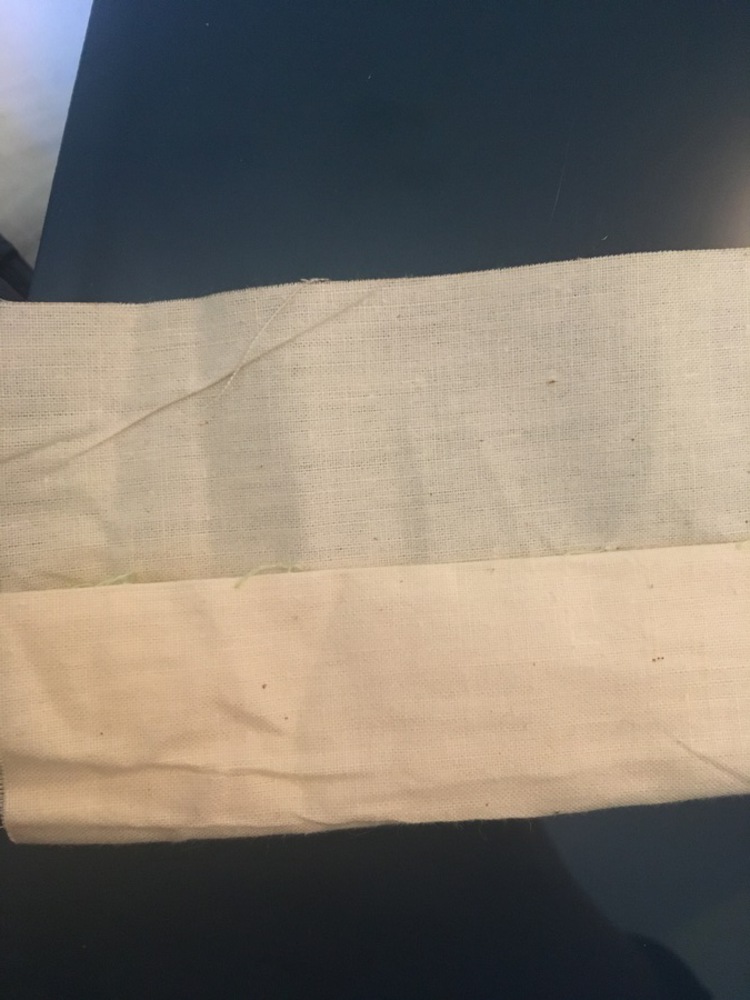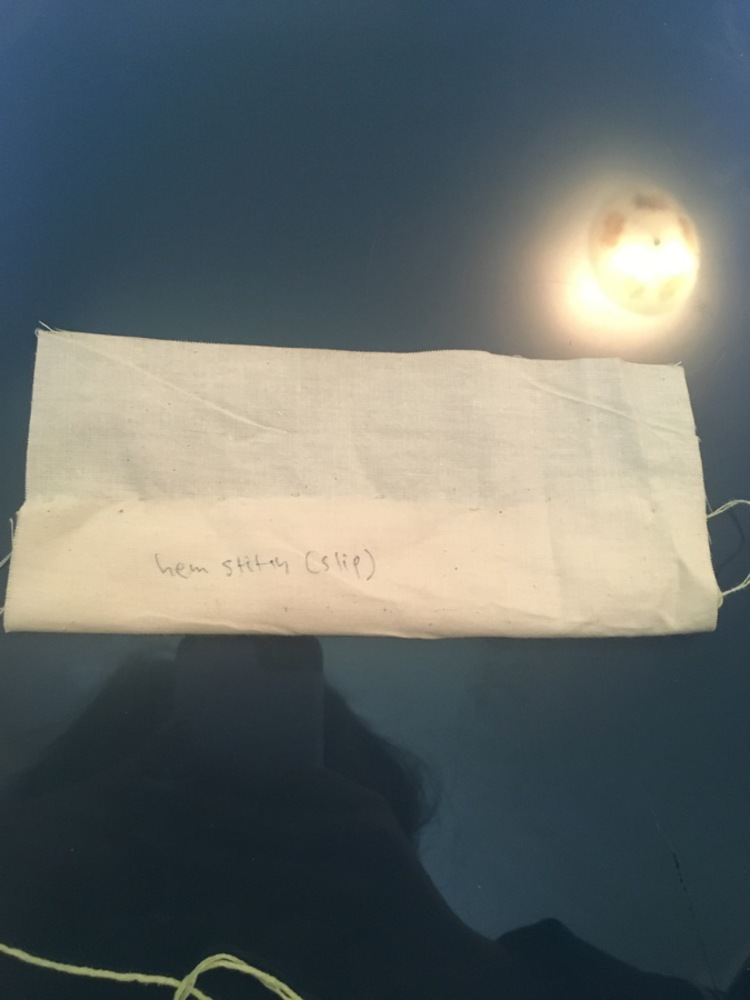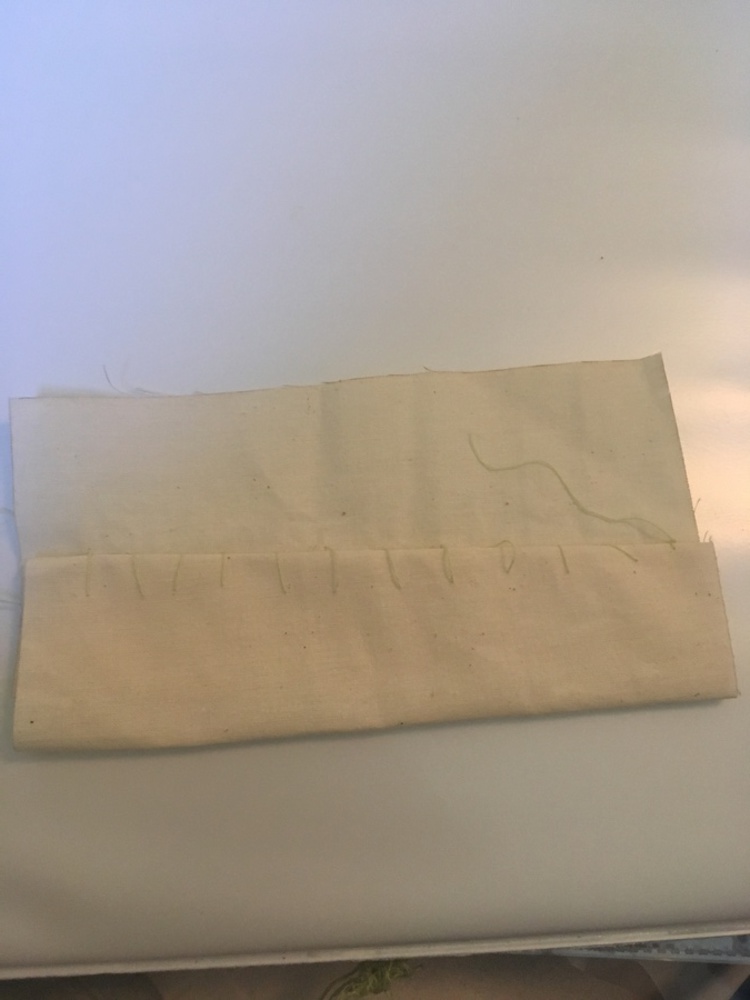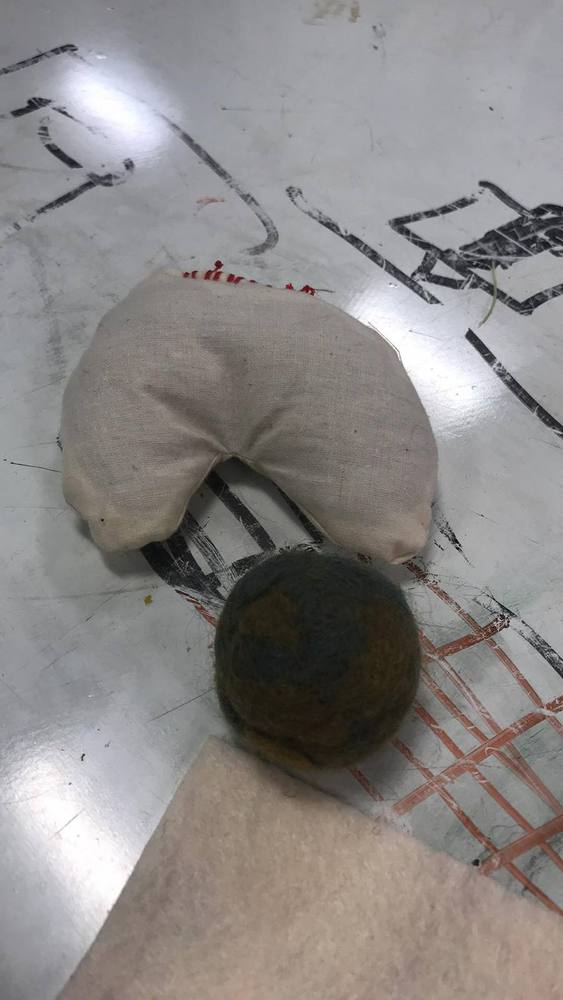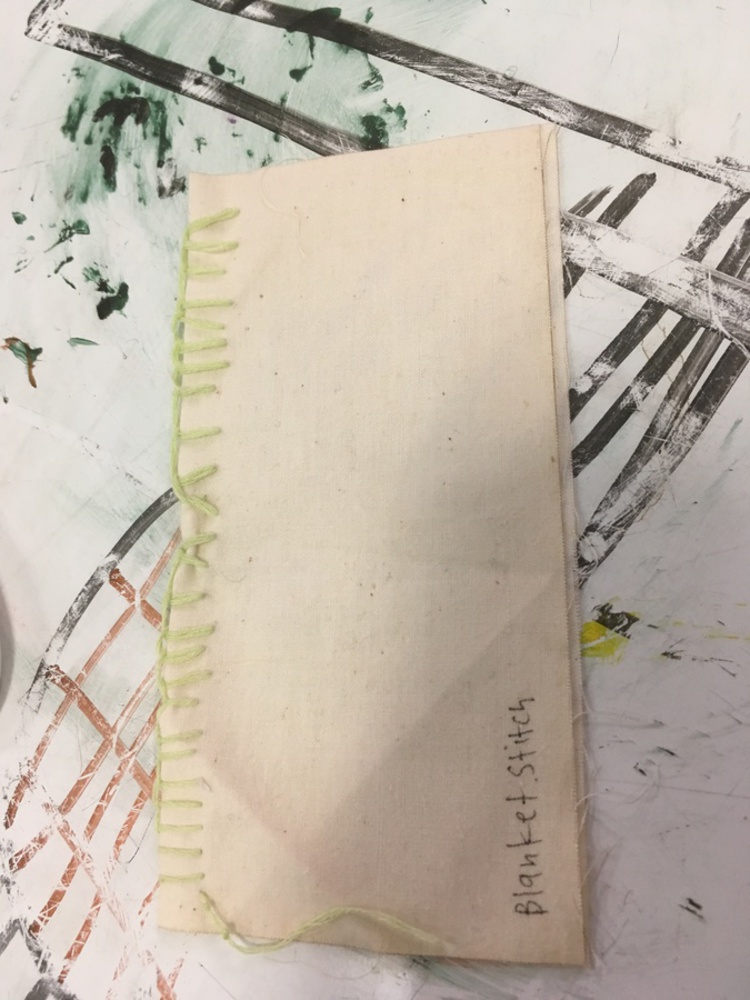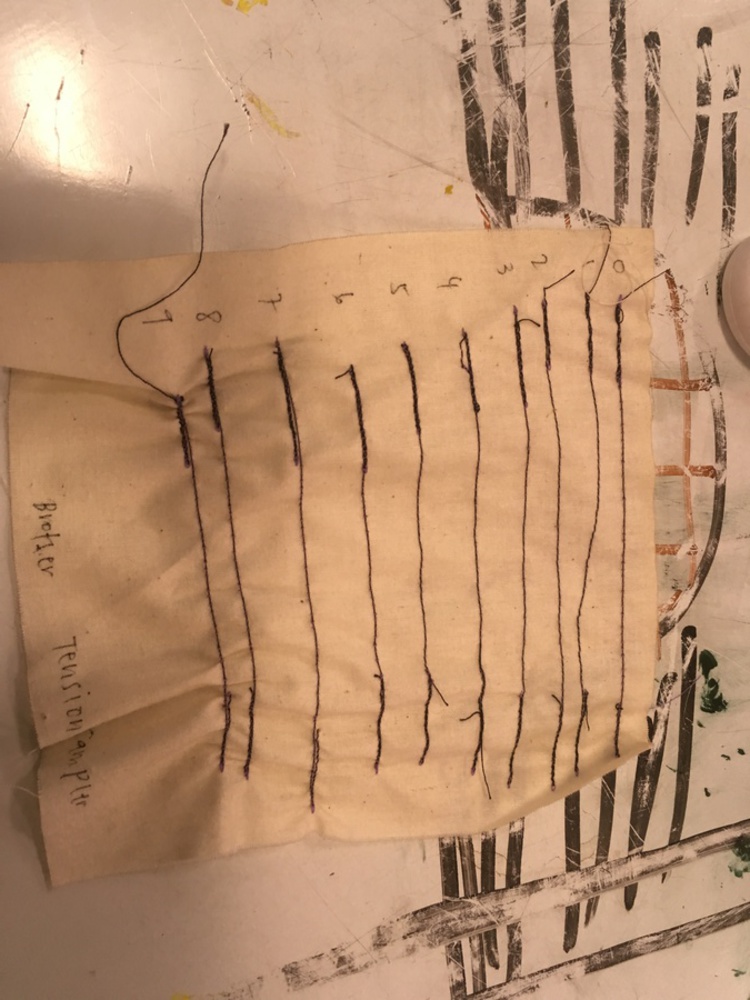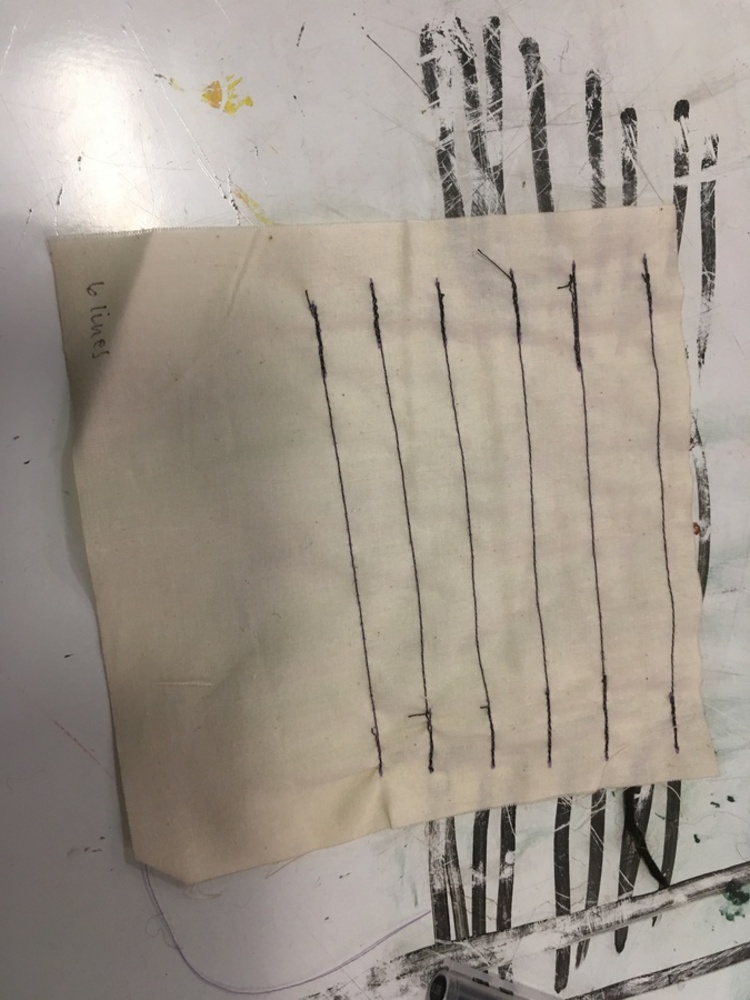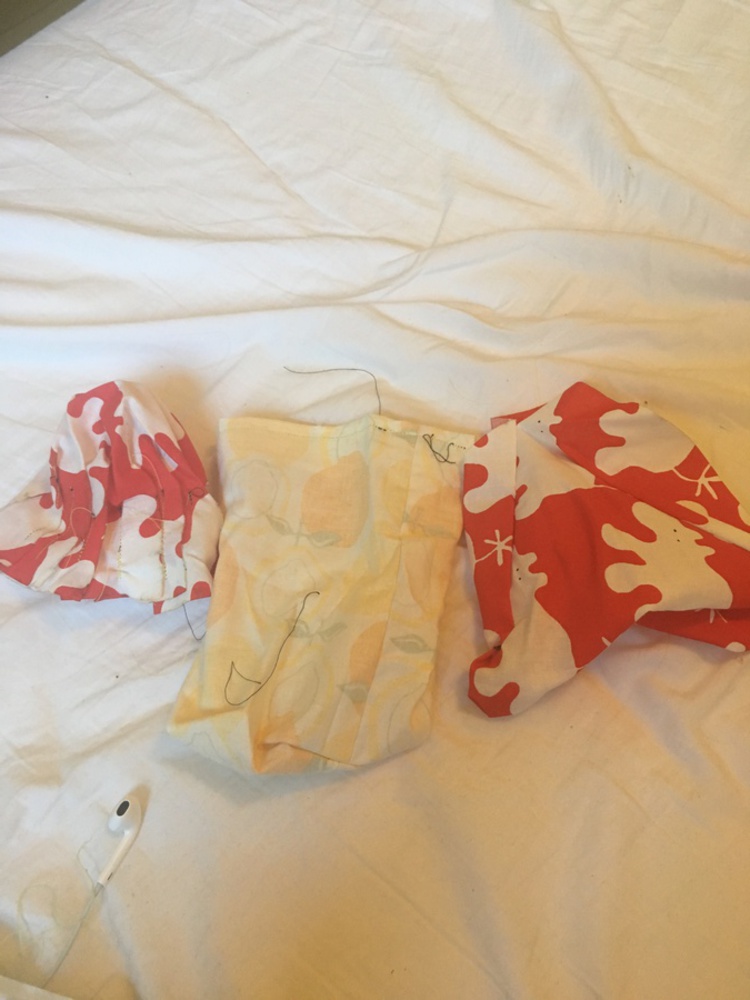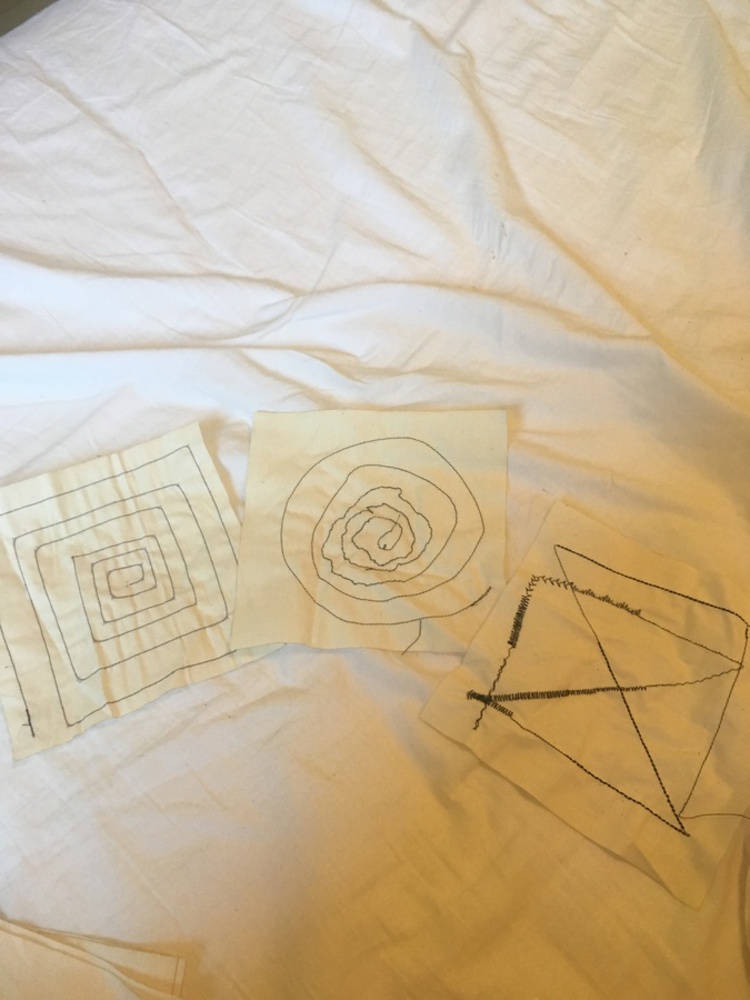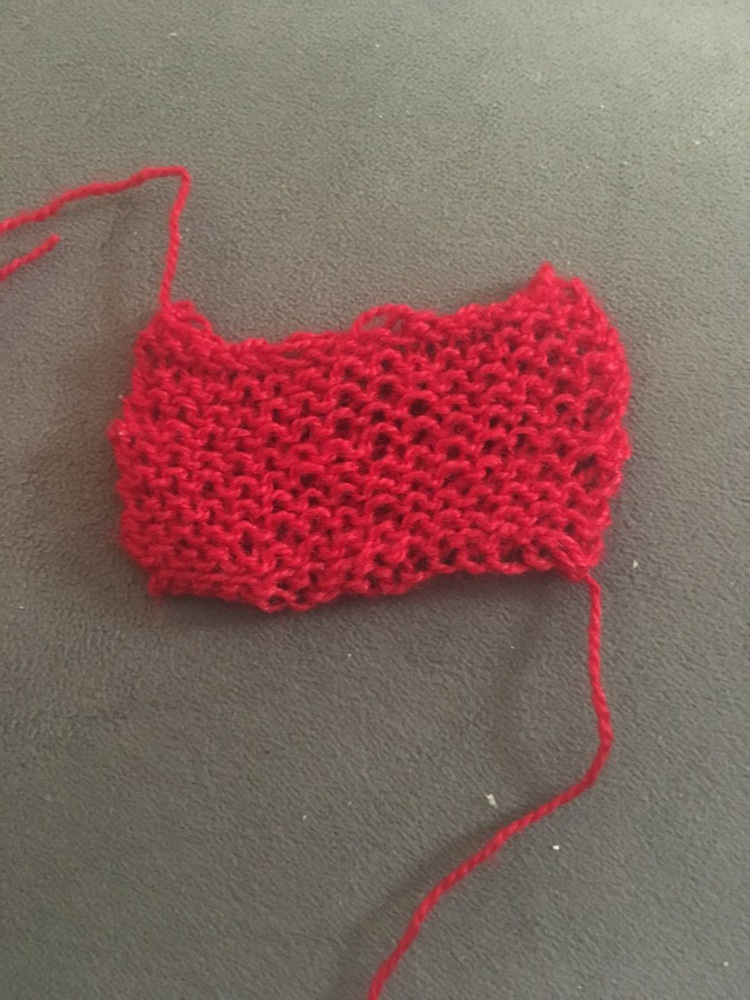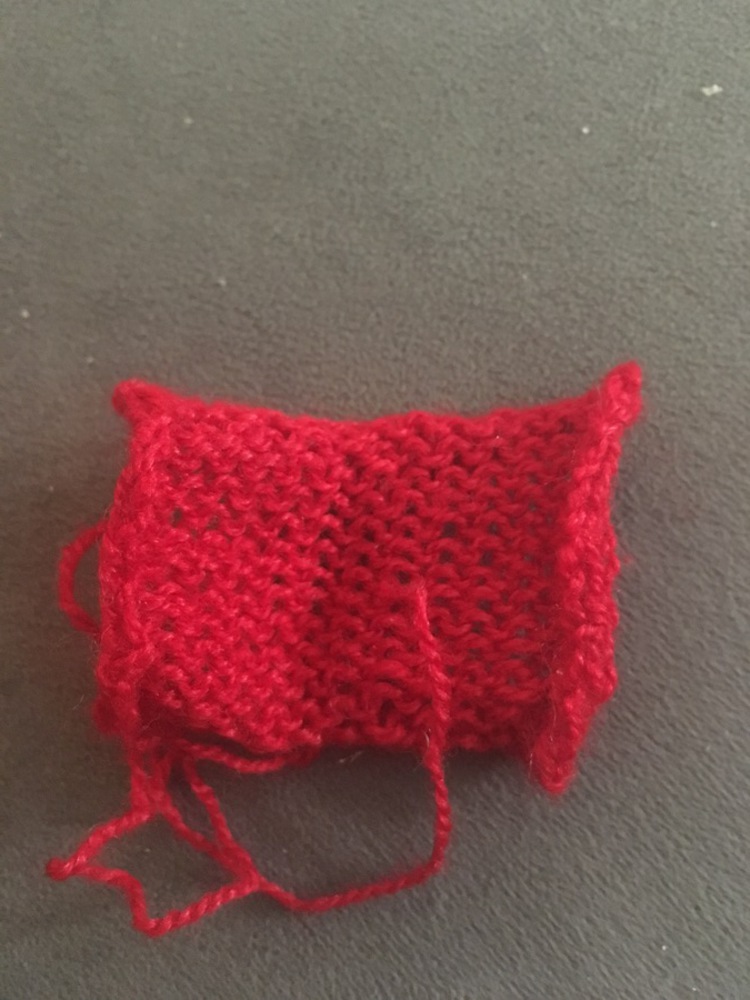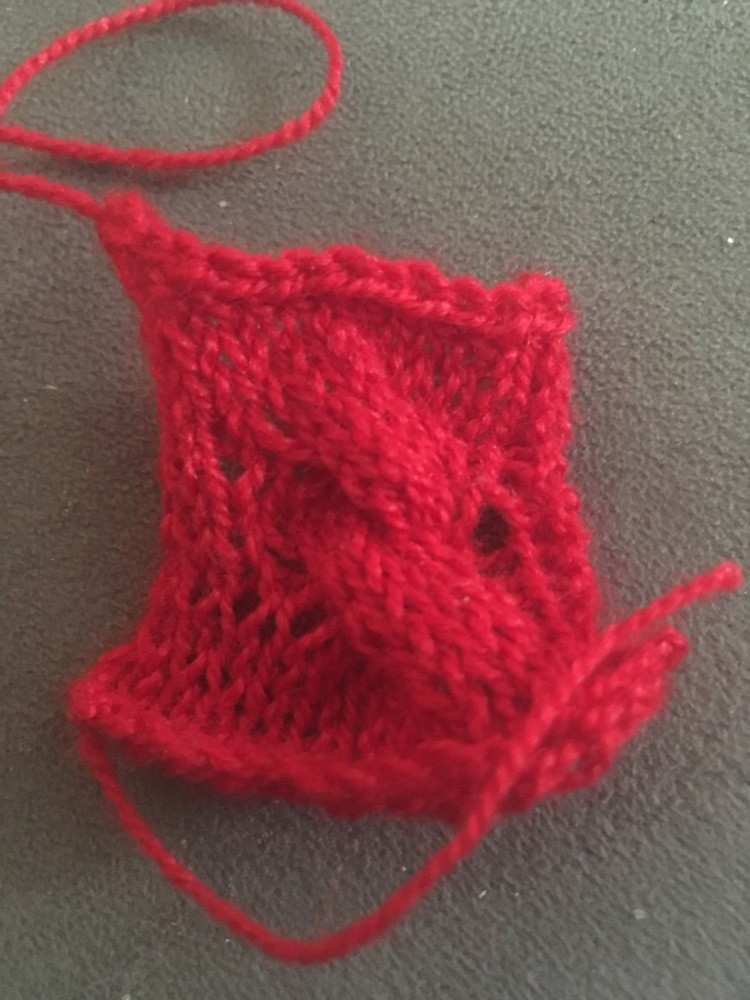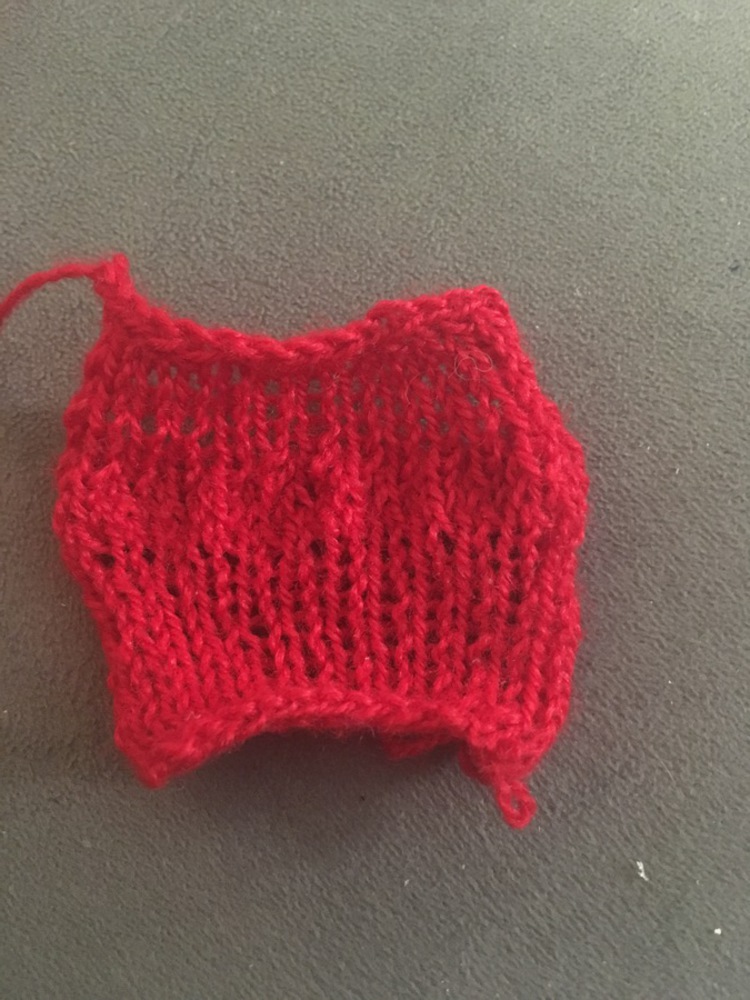Outcome
After learning several ways to create form out of fabric, I wanted to explore different kinds of textured knit fabric. I generated several swatches, each 15 stitches wide (but varied in how many rows). Most used a long tail cast on (learned here) or a knitted cast on, and all of them used a k1k2tog cast off. I settled on these cast ones/bind offs because they are stretchy and were easy for me to learn. I thought that using a stretchy cast on/cast off would be best, since the tight cast on/cast off in most of the beginner tutorials I found would distort the textures I wanted to create. I used the same yarn and needles for each sample, so that different needle sizes wouldn't affect the samples.
Next, I produced a stockinette stitch sample, which alternate rows of knit and purl. Unlike garter stitch, the sample has a right side and a wrong side. The right side is smoother than garter stitch. The wrong side looks a little similar to garter stitch, but unlike garter stitch there aren't defined ridges. Stockinette also curls, both from top to bottom and left to right (you can see the top/bottom curl clearly in the picture of the right side, and the left/right curl in the picture of the wrong side).
Next, I decided to try creating a cable, or twist, in the knit fabric. The basic idea is to hold 4 stitches out, knit the next 4, put the first 4 back on the needle, and then knit them. This sort of manipulation of fabric was different from what one could do with a sewing machine (at least what someone at my level can do), and created a prominent twist. I used a stockinette stitch background to help the texture stick out more: on a garter stitch background, the cable might've gotten lost.
You can upload files of up to 20MB using this form.
